Press Contact:
Situation
The City of Pea Ridge, AR, settled on the crest of the Ozark Mountains, has a population of around 7,000. The water distribution system is comprised of 20 remote sites that require telemetry to monitor and control the operational assets that distribute the water. Existing cellular service, hardware, and associated PLTE. VPN tunnels became end-of-life and the city had to respond with an alternative solution within 30 days or the sites would not be able to communicate with each other creating operational chaos and disruption in water distribution to the residents. Not only was the existing cellular service in danger of being disrupted, but it was also discovered that there were multiple opportunities to harden the cybersecurity of the existing SCADA system.
Specifics of the problem to be solved
The City of Pea Ridge worked with their integrator, Instrument and Supply, along with ISI partner, LEC, Inc, to implement an easy to deploy and scalable replacement while meeting budget goals. The solution was comprised of off the shelf and pre-configured cellular hardware, LEC’s in house managed Private Cellular Network, and retooled VPN tunnels of which all follow CISA and NSA guidelines for water and wastewater cybersecurity.
Specifics of the benefit
The new solution was deployed in 50% less time than traditional systems, eliminated the need for expensive annual service subscriptions, and removed vulnerable SCADA server architecture from the open internet. This refreshed technology not only reduces the chance cybersecurity threats, but it also enables secure remote diagnostic capabilities along with maximum cellular uptime nearly eliminating service disruptions to the end users.
Broader Perspective
LEC and ISI provide carrier agnostic telemetry solutions to securely move water and wastewater within small and medium sized municipalities. Packaged solutions include turnkey cellular data services, web-based monitor and control packages, and affordable off the shelf hardware.
Thanks to Ken Hayes, Water Wastewater Superintendent for Collaboration on this and a very successful project.
Press Contact:
Case Study
IIoT is not just platform, connectivity and hardware: in most cases, it also requires engineering. LEC is unique in the fact that we can take IIoT technology the last mile with our engineering services to optimize the solution, as well as total cost of deployment and ongoing OPEX.
BACKGROUND
The client was looking to implement a remote monitor and control solution for nearly 3000 mission critical communication infrastructure sites. Should commercial power be lost, failover to generator power and sustaining power to these sites is mission-critical to operations. Operationally, the client required a simple install methodology, utilizing their current staff, that delivered real-time data and alarms for engine block heater fail or overheat, starting battery voltage, genset output voltage, diesel fuel and/or LPG levels. Additionally, the client wanted real time alarms when a full or partial loss of power from the 240VAC utility service head occurs. The utility provider only reports a total loss of power so the generator would not necessarily detect partial power loss (failure of a single leg of the incoming power feed), therefore not turning on alternative generator power. Alarm notifications are triggered when battery backup system voltage no longer indicates charging voltage or falls below a desired threshold.
EMERGENCY GENERATOR MONITORING CHALLENGES
No off-the-shelve solutions met corporate needs, and therefore, required an engineered solution
Large variety of generator equipment types and ages
Multiple fuel types (LP and Diesel)
Only 12 VDC power supply available
Simplified install design
Small development budget
Short timeline to deployment
Budgetary constraints due to project size
Solution required Class1, Div 1
SOLUTION
LEC engineered a simple, yet robust IIoT enclosure that incorporated cellular data transport, and the required amount of digital and analogue I/O (with future expansion capabilities). The solution included off-the-shelf Option Cloudgate cellular gateways embedded with LEC’s iQ2 platform to securely collect pertinent data and make that data visible in iQ2’s user interface.
Alarm conditions were created for each data tag to push alerts via email and text to the client’s operational team. iQ2 continually provides the needed data analytics for reporting and distribution to the client’s operational and leadership teams, while also meeting data warehousing protocols and needs.
OUTCOMES
Fully functional, sustainable, scalable and cost-effective solution
Zero cost in feature development or integration utilizing the iQ2 Platform
Simple deployment model, with only three install SKU’s, iQ2 enclosure, and sensor kit for either LPG or Diesel
Flexible design to later incorporate additional sensors and desired data points
Defined fuel levels to schedule and prioritize fuel vendor deliveries
Met budgetary constraints and short timelines
Press Contact:
Press Contact:
Press Contact:
Press Contact:
JACKSON, MS – LEC is providing Industry with the enhanced ability to maintain mission-critical power with the launch of the customizable Industrial Internet of Things (IIoT) remote control and monitoring solution, GenSet.
The newly-packaged GenSet solution, powered by LEC’s award-winning iQ2™ technology, is designed to overcome the challenges associated with maintaining vital, uninterrupted mission-critical emergency back-up generator power in times of main or grid failure.
“The GenSet solution was born out of multiple-client opportunities utilizing iQ2 for this use case,” says LEC VP of IIoT Brian Rosema. “Clients were looking to implement a remote monitor and control solution for large numbers of mission-critical infrastructure and operational sites. That’s how we discovered the market gap, and the need for this type of packaged solution for monitoring, control and data delivery across a diverse list of assets in the field.”
As the latest addition to LEC’s iQ2 product line, the unique GenSet solution enables real-time monitoring and control from any device, real-time performance trending analytics, and real-time alerts and alarms. This combination, along with GenSet’s many other features, drives efficiency, reduces maintenance costs, improves performance, and prevents fuel theft, resulting in overall increased productivity.

“IIoT is not just platform, connectivity and hardware: in most cases, it also requires engineering,” explains Rosema. “LEC is unique in the fact that we can take IIoT technology the last mile with our engineering expertise to create repeatable solutions that can drive down costs, simplify deployment and readily integrate the vast majority of current assets in the field. Additionally, it allows us to package a repeatable solution that can be sold through our sales channels.” The GenSet solution is designed for simple deployment and enablement on any number of sites or assets, no matter how few or how many. Learn more, schedule an online demo, or speak with an expert by visiting our contact us section.
LEC remains unwavering in our commitment to delivering performance-driven, disruptive innovation by working alongside our partners and clients to identify challenges and engineer solutions that move industry forward.
About LEC
LEC provides industrial automation control engineering, and industrial IoT (IIoT) enablement and web platform services of the highest quality with an unending commitment to our Clients, Strategic Partners and Communities. Through Client and Partner engagement, technical innovation, research, and investment in the brightest human resources, we engineer smarter systems to achieve complete satisfaction of those we serve. With each project, our goal is to establish a new standard of quality and professionalism.
For more information about LEC’s products and services, visit us online at https://lecinc.com/website_0cbf4925/.
– 30 –
Press Contact:
For those that are familiar with using cellular connectivity in your SCADA applications and projects, I have no doubt that you have experienced frustrations while in the field trying to find that perfect cell signal sweet spot to ensure the comms are stable in order to avoid being woken up in the middle of the night that your device is offline and you have to roll out of bed and go for a midnight drive to figure out what is wrong. Often times just trying to locate that sweet spot is kind of like trying to get dressed in the dark of night. You are completely blind with no idea if what you’re doing is right, only to discover later you’ve been walking around all day with your underwear on backwards. It can be frustrating especially in those outlying areas where there’s nothing around but you and the bugs.
Fear not! There are a litany of tremendously useful tools that are freely available on the web and app stores that can assist you with estimating just how much cell signal you can hope to expect at your sites long before you hop in the truck. These tools are easy to use and can make an install so much less frustrating but before we jump into what those tools are and how to use them, we first need to better understand LTE signal and the values a cellular gateway uses in order to make the decision as to which tower to connect.
RSRP vs RSRQ:
Cellular gateways are constantly monitoring incoming signals that are being transmitted by nearby cell towers, searching for the one that has the best signal. The value it uses to make this choice is called RSRP or Reference Signal Received Power, a value always displayed as a negative number. The higher the number, the better the signal. In the figure below, we have two towers, Cell 1 and Cell 2 servicing a single cell gateway. In this particular example, the gateway will select Cell 1 because its RSRP is stronger than that of Cell 2, -90 dBm vs -115 dBm, which is partly due to it being in closer proximity than the other.

Now just because that signal is “stronger”, does not necessarily mean the signal is “better” than the other. There is another very important value that the gateway also takes into consideration when making a tower selection, especially when the RSRP values are nearly identical. That value is the signal quality or RSRQ.
Reference Signal Received Quality or RSRQ is, in the simplest of terms, a signal to noise ratio. Basically, it is how much interference by other signals is being detected in this signal and the gateway’s ability to extract data from that signal. Let’s say there are two towers that are nearly the same distance apart from the cell gateway and both RSRP values are nearly the same. In this example, the gateway cannot determine which signal is better by RSRP values alone. It will need to look at the RSRQ value being received and, from there, will choose the one that has less interference. In this case it would mean Cell 2 would be chosen because its RSRQ is far better, -5 dB vs -15 dB, than the signal received from the other tower. Remember, all values are represented as negatives.

Keep in mind this is only relevant when there are multiple towers servicing a single area. In many cases, especially in more rural environments, there may be only a single tower for the gateway to choose.
Now that we know what values the gateway uses to make these tower selections, what are the values that would be considered good vs those that would be considered bad or unusable? Ideally, the higher the signal, the weaker it is with the potential for data drops and/or disconnections from the network. For RSRQ, the closer to “0” the number, the lesser interference detected, and the likelihood that signal is “unusable”. See the below charts for guidelines on what signal levels to strive for, whenever possible.


Locating Cell Towers:
As mentioned before, tower distance plays a tremendous roll in how much signal is received at a given site location. The further away a tower is, obviously the weaker that received signal will likely be.

There are additional factors that can affect received signal that are out of one’s control such as terrain, objects in the path between the gateway and tower, rural vs urban, weather, etc. All of these can have adverse effects on the signals received and we, as field techs, have absolutely no control over. The best we can do is try to overcome some of these barriers in order to improve our RSRP and RSRQ values as much as possible.
The first step is to get a lay of the land before even stepping foot on site. There are several good resources online that can provide you with tower locations and the distances of those towers in relation to where your install will be. Once such site is cellmapper.net
Cellmapper.net will display all the nearby towers for the carrier of your choice onto a map. You simply search for the address or, if you don’t know the exact address, the city closest to where your install will be. Then you can search and select your desired carrier under Menu – Provider. Say for example, you want to search all the AT&T towers near your location. In the search bar, enter AT&T and choose AT&T Mobility, Network Type, leave as 4G LTE, and for Band keep at “All” then Search.

All the towers with AT&T service will display on the map. From here, select a tower to see more details about that tower as well as which direction the tower signal is propagating, which makes as to whether or not a gateway will see that tower. If a tower is close but it is radiating its signal in the opposite direction of your location, the cell gateway will never detect that tower.

You can click also “Go to Cell” under Tower Info and see how far that sector of the tower is able to reach which can help to determine if your location is well within coverage or potentially on the cell edge or outside of coverage where something like a BDA might be needed.
There are also apps that can be used to do the same but there are two downsides: You need to be onsite while using them and it will only show the tower of the network your mobile device is operating. For android devices, one such app is called Network Cell Info Lite. This app will display a lot of useful information including signal strength, signal quality, tower you are connected as well as the distance from that tower, and so much more.

Cell Network Info Lite is only for android but iPhone does have a couple apps of their own that can be quite useful as well. One such app is Cellular Network Signal Finder. This app will display all the towers that are around your current location. Similar to Cell Network Lite, it will display useful information about each tower to assist that tech who is in the field, searching for the right place to mount or point antennas. Simply search the app store on either Android or Apple to find these very handy and useful apps.

Now none of these tools that we have discussed will tell you how to improve your signal. That comes from things like antenna selection i.e omni vs directional, antenna gain, or adding a BDA to a location to increase the gateways transmit power. What these tools will do, however, is better equipment your field techs with enough information to make educated decisions while in the field to ensure data transmissions and connection stability is as strong as possible.
The locating and mapping of cell towers should always be the first step before arriving onsite to install any cellular gateway but, if any of this seems too daunting, LEC is certainly here to help. Our experienced network engineers can assist any field tech with carrier selection for any given location as well as assistance with antenna placement, if needed. Keep in mind not all locations will be perfect, and you may find yourself alone out in the field desperately seeking some signal, cursing at the world for any signal at all but, with a simple phone call to LEC or by utilizing some of the tools we discussed, things may not be so desperate after all. It certainly beats walking around all day with your underwear on backwards.
Matt Crites
Senior Sales Engineer
Press Contact:
It is interesting how you can sometimes observe random things that was created as a way to entertain a person and quickly discover that it can also be very relevant to the events of the world. Take movies, for example. Movies are made to entertain by transporting us temporarily from the mundane events of our lives and allows us to laugh, cry, or scare until the credits roll and it is back to the real world. It is at these moments after the curtain falls that you get a chance to reflect on what you just watched and realize sometimes art can imitate life, even when, on the surface, it may not appear to.
One movie that comes to mind that reflects this idea is from the late 70’s, When a Stranger Calls. If you are not familiar with the film, it’s a horror movie about a girl, played by Carole Kane, who is babysitting a couple of kids who you ironically never see because they are supposed to be in their rooms, asleep. Five minutes into the film she starts getting very haunting phone calls from a man who clearly has ill intentions that says, “Have you checked the children”. Feeling distraught and unnerved by these calls, she eventually dials the police who tell her if she gets another phone call, keep him on the line and they will trace it. Throughout the scene, it is clear the sitter is shaken and nervous but still finds some solace in knowing she is safe and secure inside the house. The big reveal comes after the sitter gets another call from the stranger and after keeping him on phone long enough, she quickly receives a call back from the police who reveal that they traced the call and exclaim with urgency, “the call is from inside the house!” You can’t help but be glued to the screen with shock, your jaws hanging open as you realize just as the sitters has that the stranger has been inside the house the entire time. It’s then a slow creaking sound of an upstairs door echoes through the house as it opens, the door of the children’s bedroom. A dark shadow comes into view as the sitter frantically tries to get out of the house. There’s a tremendous scream as she desperately tries to escape through the front door and then scene ends.
It is these types of scenes that are prime examples of art imitating life, not necessarily in the literal sense but metaphonically. If you have read the news lately you may have noticed that public utilities’ water systems are being targeted at an alarming rate. Foreign hacker groups from across the globe are relentlessly using every trick at their disposal to launch attacks on unsuspecting utilities, in hopes of taking control of their systems and demand some kind of ransom or to do nothing more than cause chaos. It is a harsh new reality we face in our now heavily connected world. One of the greatest inventions of the 20th century, the Internet, a medium that has allowed for such tremendous advances in how we live our lives has also opened our world to more threats than ever before.
Malicious hackers are viciously attacking public utilities, searching for that one point of weakness allowing them undetected access to SCADA systems. The most recent incident, as reported by U.S. Cybersecurity and Infrastructure Security Agency or CISA, Iranian hackers targeted a utility in western Pennsylvania, taking full control of a booster station by simply exploiting lax security protocols. More specifically weak passwords and the fact the booster station was accessible from the public internet.
We are a very socially connected society and have become completely dependent upon the Internet to access data, communicate, and conduct business. It is virtually impossible to thrive without it, especially after the recent pandemic where millions discovered, with the Internet, working remotely was just as efficient as being in an office. Public utilities also discovered the same. If their systems took advantage of the Internet, they could avoid unnecessary truck rolls, saving a tremendous amount of money. They could monitor their systems from anywhere, as long as they had access to the Internet and, today, there are very few places where that is not the case.
Ironically though the downside of making a job easier also allows the same for hackers, especially if improper security measures are in place. Things like weak passwords on all mission critical assets and logins, not requiring a secure VPN to access those systems, or not taking advantage of 2 factor authentication.
Enforcing a strong password standard is one of the simplest security measures to implement. Having a weak or lax passwords is like locking your front door but leaving the keys in the lock. Avoid using common dictionary words like “password” or not changing the default passwords set by OEM’s which is easily discoverable with a simple Internet search. Instead, use random characters with a combination of upper- and lower-case letters, special symbols, and numbers. Also, the longer the password, the more difficult it is to break.
VPNs are another good security standard to enforce for accessing systems connecting to critical infrastructure. The use of a VPN’s or Virtual Private Networks can prevent deciphering any data due to the high levels of encryption used. Also, a VPN will allow technicians to access field assets remotely, preventing those unnecessary truck rolls.
To further secure your systems from unauthorized access, include 2 factor authentication. This is a security measure to add yet another layer of prevention, requiring a randomly generated and time sensitive code sent through text or email which needs to be entered before access is allowed or the approval could come through an app on a user’s cell phone.
The suggestions we talk about here are really meant to inform, not to scare but perhaps they should. Network security needs to be discussed regularly as hackers are constantly coming up with new ways to infiltrate a system every day, requiring nearly constant changes to keep those systems secure. Hackers are not looking for a challenge, preferring those easy targets that have little to no security or feel overly confident that what they already have in place is adequate. It’s like the babysitter in the movie. Despite the threat, she still felt secure inside the house, locking the doors and believing the strange caller was somewhere outside the walls but is later shocked to learn her safety was compromised all along. The stranger was already inside. The same can be said about insecure or inadequate security measures. Just because you feel safe and secure behind those locked doors, believing you didn’t leave the keys in the lock for whoever might be lurking outside, you may find yourself just as shocked to discover later that the call was always from inside the house.
Matt Crites
Senior Sales Engineer
Press Contact:
LEC is Integrating Industrial Engineering and Design with Smart Water for an Unparalleled User Experience with the Introduction of its New Website.
Pearl, MS – 2/20/2024 – LEC, a trailblazer in smart water and wastewater management solutions, and a well-established industrial engineering firm proudly announces the launch of its new website, a significant milestone in the company’s commitment to innovation and technological advancement.
As the world grapples with escalating resource challenges, LEC stays steadfast in its mission to revolutionize the industry through intelligent and sustainable solutions. “Our newly unveiled website serves as a testament to our dedication to redefine the landscape of smart technology and automation with a strong focus on water and wastewater, providing a seamless and immersive experience for our clients and partners that also addresses the evolving needs of municipalities, industries, and communities worldwide,” says Brian Rosema, VP of IIoT at LEC.
Key Features of the New Website:
Intuitive Navigation: The website boasts a streamlined and intuitive navigation structure, allowing users to effortlessly explore LEC’s comprehensive range of engineering capabilities and smart water and wastewater management solutions.
Comprehensive Product Showcase: Explore our innovative products and services that leverage the latest technologies in remote monitoring and control, data security, connectivity, and established web-based platforms. From advanced cellular technologies to web-based data collection and analytics, LEC offers a complete suite of solutions designed to optimize water/wastewater and a wide variety of other industrial processes.
Case Studies and Success Stories: Discover real-world applications of LEC solutions through in-depth case studies and success stories. Learn how LEC has collaborated with diverse clients to overcome unique challenges and achieve sustainable industrial and municipal automation along with optimized resource management practices.
Resource Center: Stay informed with our industry insights, whitepapers, and educational resources. The Resource Center is a valuable hub for professionals seeking the latest trends, research, and best practices in smart water and wastewater management.
Interactive Features: Engage with LEC through interactive features such as 3D modeling, dynamic partner maps, and webinars. The website fosters a robust and collaborative environment for industry professionals all around.
“We are thrilled to introduce our new website, representing a significant leap forward in our ongoing mission to redefine smart water and wastewater,” says Jordan Leath, Director of Marketing at LEC. “When it came to enhancing our online presence, 3816 Creative from Nashville, TN knew precisely what we required, and they were dedicated to delivering outstanding results that we could not be more thrilled with. We are inviting the community to join us on this transformative journey as we continue to push the boundaries of what’s possible. The future of smart water management is here, and LEC is proud to be at the forefront of shaping it,” Leath said.
LEC invites all stakeholders, industry professionals, and the public to explore the new website at https://lecinc.com/website_0cbf4925. For media inquiries, please contact Jordan Leath at media@nat.lwq.temporary.site.
About LEC:
LEC is a pioneering force in Industrial Engineering and Design along with smart water and wastewater management, dedicated to providing innovative solutions that address the challenges of a rapidly evolving world. With a commitment to sustainability, efficiency, and technological excellence, LEC continues to lead the industry in shaping the future of water management.
LEC, Inc.
108 Excell Dr, Pearl, MS 39208
(601) 939-8535
sales@nat.lwq.temporary.site
###
We are market leaders in IIoT enablement.
Find out how we can help your business.
Press Contact:
Let’s face it. America’s infrastructure is ageing and with age comes the potential of for disasters like water main breaks. It really is not a matter of if, it is more of a matter of when. Those linear ticking time bombs resting 10 feet before our feet could spring a major leak at any given moment. One of the most dauting tasks of any municipal water district is to quickly recognize and fix these water main breaks as quickly as possible. Very often this means waiting for the water to come gushing up from the ground like Texas tea or a neighbor nearby calls the department to say, hey, there is a small lake building in the middle of the street!

What if you could be alerted to these breaks long before anyone notices, saving you thousands of gallons of lost water? LEC’s Pressure Monitoring solution has the capabilities to quickly transmit alerts when a tremendous drop in pressure has been reached but not all breaks are that easily recognized. Sometimes those drops of pressure are more moderate than severe.
Pressure monitoring provides a water district with two things: Operational Data and Data Collection. For data collection, you are taking the pressure readings reported over a given period of time to ensure the water system is properly providing the adequate pressure throughout the system so when the water reaches a resident’s facet, it’s not slowing tricking out into their sinks.
The other side of pressure monitoring relates to collecting operational data. What does this mean? It simply means being able to recognize a potential water main break when the pressure only drops by a small amount. When a pipe breaks, you would expect to see a tremendous drop in psi but that might not always be the case. If the pressure sensor is placed much further away than where the break occurs, the pressure may drop by only 10 or 20 psi, which is not a threshold that would normally be a cause for alert but, in this case, actually is.
A perfect example of this is something that happened to me recently. I have an LEC pressure monitoring endpoint connected to a hose spigot attached to my home. The pressure reading on the gauge is usually around 60 to 70 psi.


When I turn the hose on to wash the car or water the lawn, the pressure drops to 20 psi and, after a few minutes, I am alerted that there has been a drop in pressure. A few weeks ago, the vacuum breaker on the water spigot cracked and water was quickly shooting out the top. I was completed unaware this had happened and I never received an alert that my water pressure had dropped because my water pressure was maintained enough that my sensor did not know there was a break. The pressure only dropped by 10 psi. This did not mean that the endpoint malfunctioned or not operating as it should. This simply came down to thresholds that I had set that it would only report significant drops in pressure, not moderate drops.
Luckily, I happened to be near by and was able to turn the water off before too much was lost but what if it this happened during the night or maybe I was not at home? I would never have known this was happening. Imagine if this were miles and miles of municipal water pipelines. The very same could happen and you would none the wiser, especially in more rural environments where there is not a lot of people around to notice when these breaks occur. Thousands, if not millions, of gallons in water is now lost.
How can a municipal water district recognize these more quickly and easily? This is where LEC’s iQ2 Pressure Monitoring Solution can help. First thing is to establish a baseline with how much pressure the water system provides at any given spot along the pipe when operating conditions are normal. The trending tools that LEC’s iQ2 provides can assist in establishing this baseline. What is the expected psi when everything is running “normal”.

Once a basic pressure baseline is established, the LEC GP-CEP-100P pressure monitor endpoint can then be setup to recognize these smaller drops in pressure and send alerts when those thresholds are met. This could save a municipal water district thousands in lost water revenue all due to the pressure not dropping by 30 or 40 psi which is a clear indication of a break but rather only by only 10 or 15 psi.
![]()
iQ2 Pressure Reading
The water infrastructure in the US is extremely delicate and breaks are inevitable but how quickly we respond to those breaks makes a tremendous difference from it being a major disaster or a simple minor inconvenience. LEC’s Pressure Monitoring solution can help provide the needed monitoring that makes the latter more probable. After all, nobody wants to feel under pressure.
Matt Crites
Senior Sales Engineer


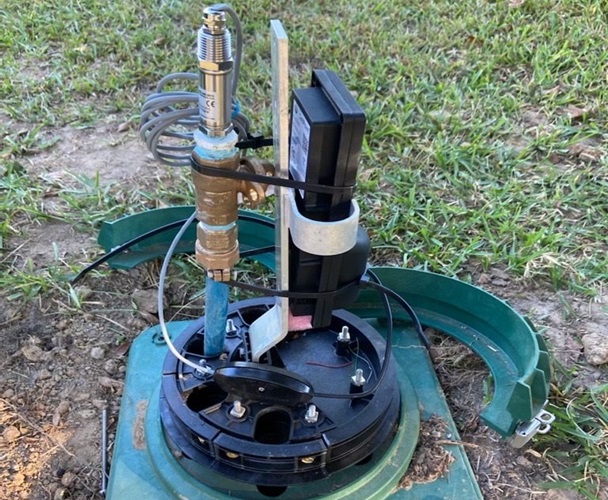



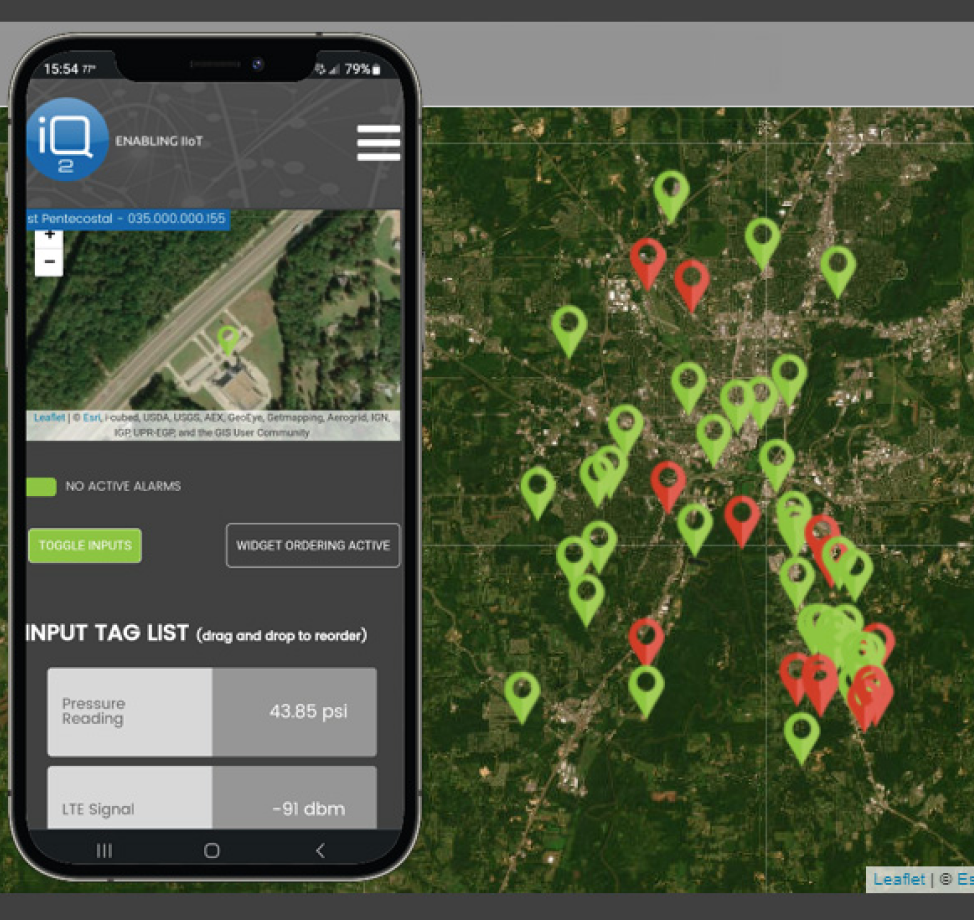
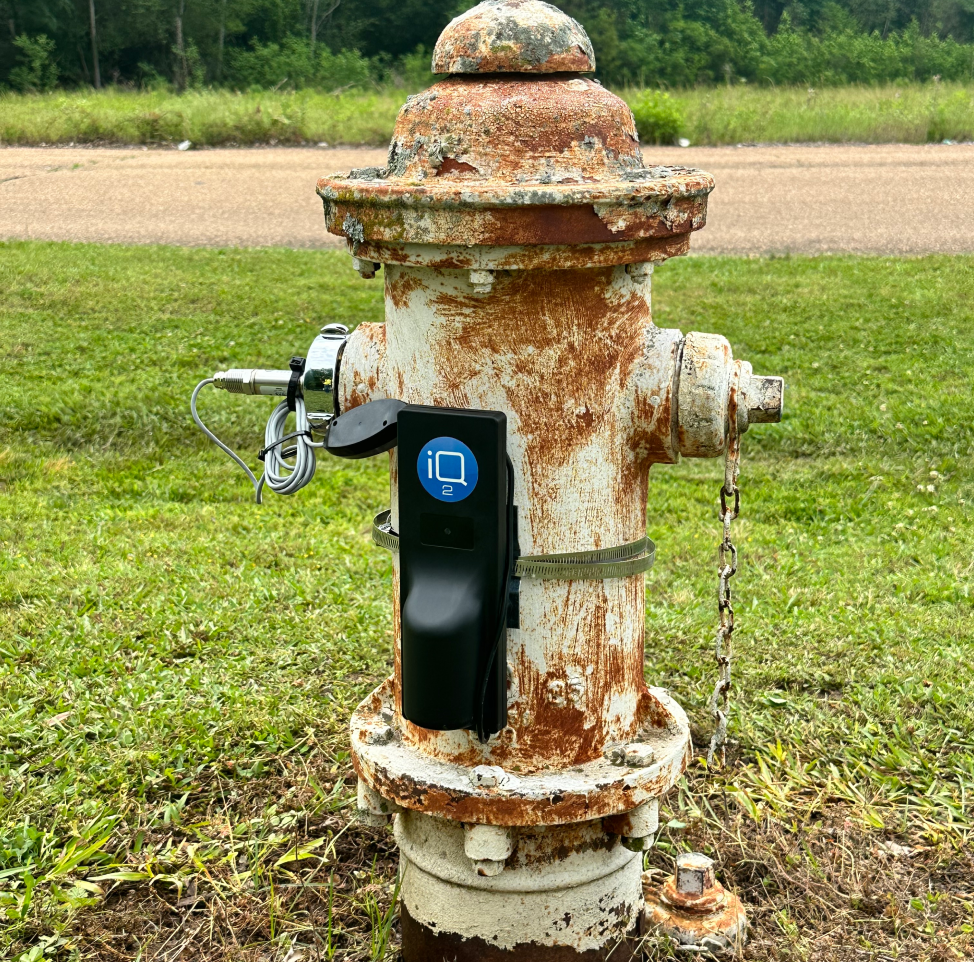
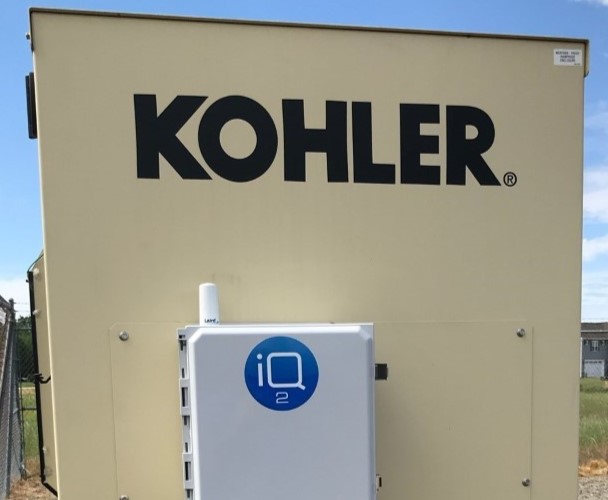

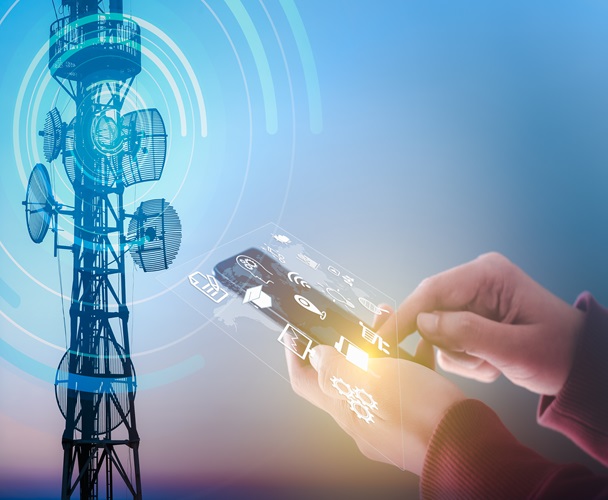
 Learn more
Learn more